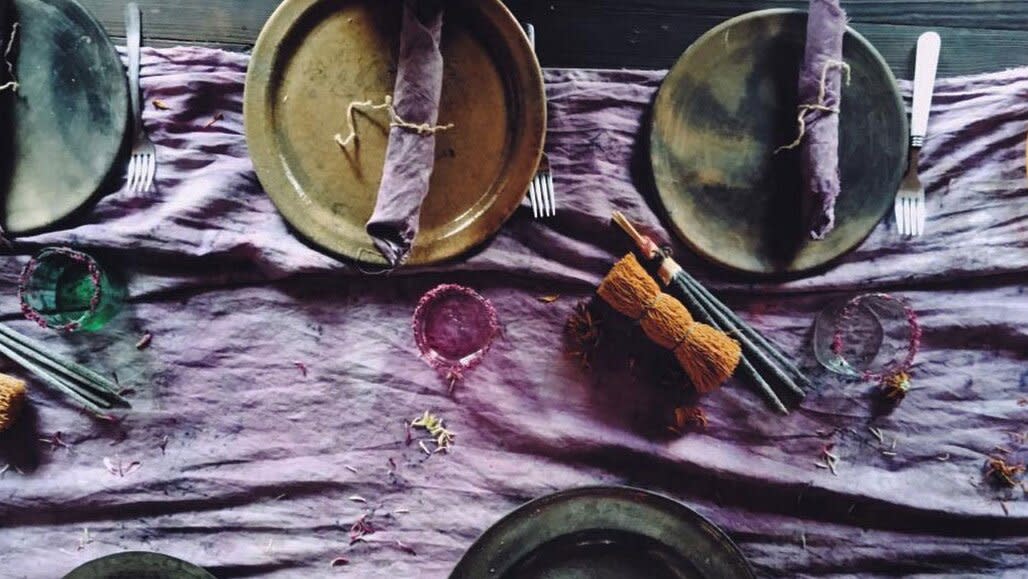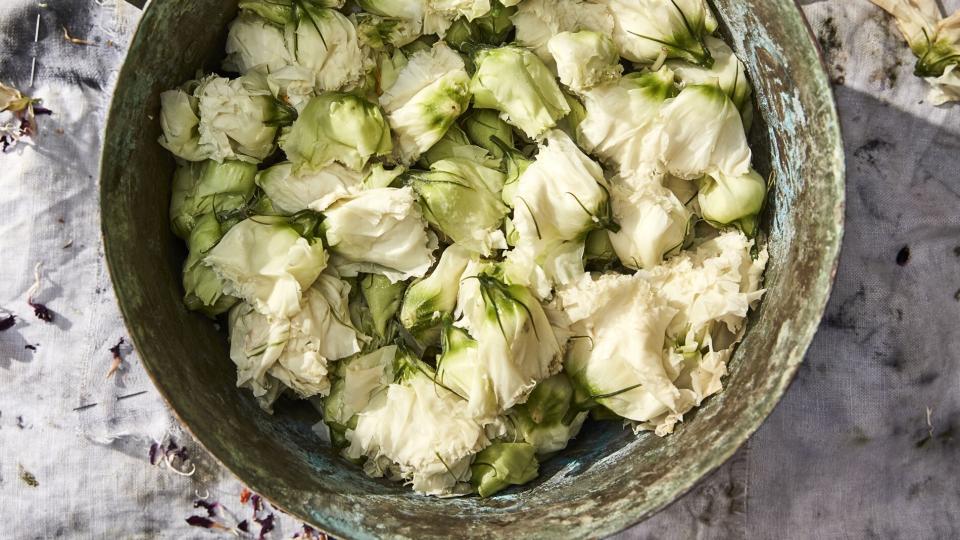How to Dye Clothing Using Avocado Peels, Onion Skins and Other Food Scraps

Cara Piazza
To most people, an onion's delicate skin is no more than a flimsy (yet effective) shield that separates dry, functioning eyes from a world of watery pain. But Cara Marie Piazza sees something else. The Brooklyn-based textile designer uses flowers and food scraps—a spectrum of purple onion skins, pink pomegranates, green avocado peels, red wine, yellow turmeric and more—to transform colorless fabrics into one-of-a-kind garments, from hand-dyed silk underthings to gowns.
After falling in love with the medium during a natural dyes workshop in her final year at London's Chelsea College of Art and Design, Piazza dedicated her career to working with plant- and animal-based pigments, eschewing the traditional variety, which, she says, use toxic metal salts to bind their color to clothing, polluting the ecosystem. While the designer has partnered with restaurants in the past (like Reynard in Williamsburg's Wythe Hotel) and plans to work with more spots to convert food waste into natural dyes, she is currently relying on scraps from florists and leftovers from her and her roommate's own dinner plates. Besides working on her intimates line, Calyx, Piazza dyes items for clothing designers, artists and private clients, and she also offers a service where she uses the flowers from a bride's bouquet to color a garment, immortalizing the day with an heirloom keepsake.
Even after working with natural dyes for years, the designer constantly experiments and is still sometimes surprised by the outcome. So far, squid ink produced the most offensive smell, and the rambutan she picked up in Chinatown generated a soft, lovely pink shade. Amazingly, onion skins can produce an orange or purple hue, while avocado peels and pomegranates create purple and brown colors, respectively.

Gentl and Hyers
"That's the beauty of natural dyes; you can only control them so much, as the color is affected by so many variables," she says. It takes patience. "But like anything good in life—cheese, whisky, wine—the aging process is what gives the color life," she adds.
Below, find Piazza's tips on how to use your own leftover food and floral scraps to add some eco-friendly color to your closet.
Don't be afraid to mess up.
Be flexible with the outcome. "My first few times dyeing, I achieved a variety of some really special shades of brown," Piazza says with a laugh. Besides, you may fall in love the color you didn't plan to create.
Natural dyes work best with natural fabrics.
Cotton, hemp, linen, silk and wool will all work well.
Use a separate pot.
Don't use cooking pots for dyeing, since the metal can change color. Go with a pot made from a non-reactive material like stainless steel or clay instead.
Start with onion skins.
Fill your pot with water and about ten onions-worth of onion skins, and bring it to a boil for one hour, until you achieve your desired color. (The longer it boils, the darker the shade will be.) When the water becomes the color you like, strain out the onion skins and place them on a paper towel to dry. "You can keep using them until they're a goopy consistency, then throw them in the compost," Piazza says.
Keep the pot over heat, making sure it's around 110 degrees Fahrenheit, and add one tablespoon of aluminum sulfate. (Piazza buys hers from Nuts.com.)
Wet your garment before adding it to the pot. Leave it in for about an hour, and then lay it out to dry overnight. Iron it before rinsing with fresh water once more.
Unabashedly brag about how you recycled onion skins to create a gorgeous new garment.

